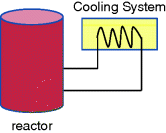Part II
Methods
In the second part of the book we review and discuss several methods for representing uncertainty, as well as associated approaches for the treatment of uncertainty in the context of risk assessment. A key point of reference is the following list of features specifying what is expected from a mathematical representation of uncertainty (Bedford and Cooke, 2001, p. 20):
- Axioms: Specifying the formal properties of uncertainty.
- Interpretations: Connecting the primitive terms in the axioms with observable phenomena.
- Measurement procedures: Providing, together with supplementary assumptions, practical methods for interpreting the axiom system.
We will particularly address the second bullet point. For the purpose of illustration, we will make use of some simple examples in the presentation. As the intention is to highlight key conceptual features and ideas, the examples in Part II are kept rather basic compared to the more comprehensive applications in Part III. The first example is introduced below.


